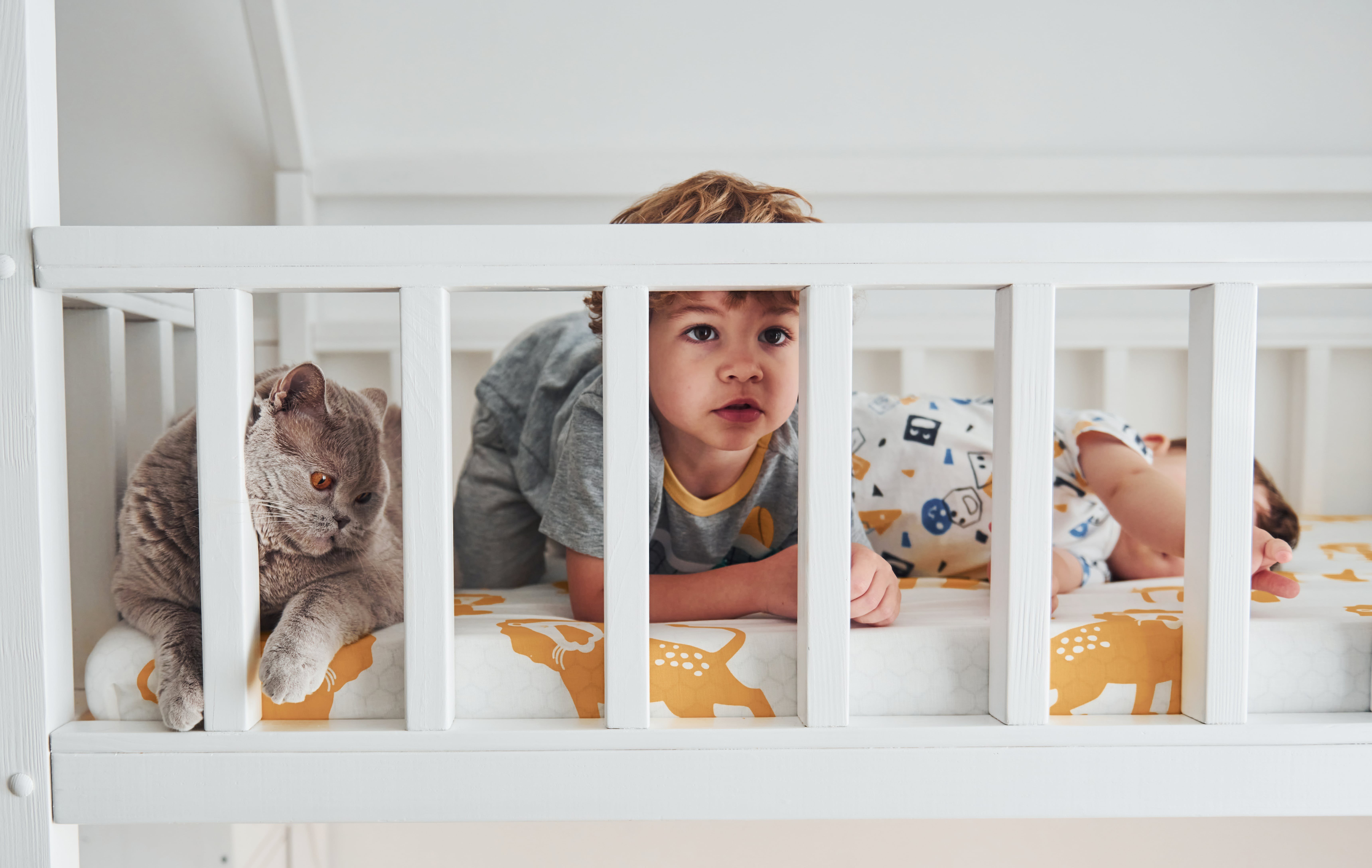Bedside Cosleeper
A bedside cosleeper is attached to your adult bed. It's safe, so long as you follow the CSPC safety guidelines for infant sleeping spaces.

These guidelines are similar to crib bedding standards. You can read more about these guidelines here. When choosing a bedside sleeping device safety, comfort, and convenience are the main factors to consider.
Safety
In accordance with the American Academy of Pediatrics' recommendation that infants sleep in the same room as their parents cosleeping (a method that is sometimes referred to as bed-sharing) has gained popularity among many expecting and new parents. The Academy notes that room-sharing is more secure than sleeping with an infant in the same bed since it decreases the risk of Sudden Unexpected Death in Infants or SIDS. While the AAP does not recommend bed sharing but does recommend that sleeping with a partner be done on a separate sleeping surface to limit the risk of SIDS. The development of the bedside crib was important for a number of families.
describes it can be described as a crib-like sleeper that is attached to an adult bed frame. The bedside cosleeper allows parents to keep an eye on their baby and allows the baby the ability to sleep in their own bed. The best cosleepers are built with top-quality materials and adhere to strict safety standards. To ensure your child's safety, look for the Juvenile Products Manufacturers Association stamp of approval. This is a sign of rigorous testing and quality control.
The safety of a bedside cosleeper is contingent on a variety of factors that include the way it is set up and connected to the parent's bed. If the bedside cosleeper is not connected to the bed of the parent in a way that prevents the gaps and spaces in which an infant can become trapped, it could create an hazard of suffocation. It is important that the attachment system of a bedside crib be examined to determine if it is able to withstand the forces that could be imposed during use, such as a parent rolling onto and off the sleeper, or a 25-lb. The attachment system, or the corners of the bedside sleeper should be subjected to the horizontal force.
The standard that is voluntary for bedside sleepers includes by reference to the federal consumer product safety standard for bassinets and cradles (16 CFR part 1218) and includes requirements for performance for fabric-sided enclosed openings. The requirements that are mandatory in the standard also address head and neck entrapment hazards by insisting that following the application and release of 50-lb. horizontal force near the attachment systems and corners of the bedside sleeper a gap that is greater than 1.0 in. It is not permitted to create a gap that is greater than 1.0 in. ASTM's electronic Reading Room offers read-only versions of the standard.
Convenience
Many parents are reluctant to cosleep because they fear suffocation or SIDS, or because it's an act of "Ferberization" which requires children to sleep alone. Anthropologists have observed for a long time that many mammals, primates and people from other cultures sleep often. This may be because infants are comforted by the familiar voice of their mother and it may also help them learn to self-soothe.
The top bedside sleepers have an innovative design that is attached to the sides of any bed and swivels for ease of access to feedings in the middle of the night or diaper changes. Look for a model with feet that can be adjusted to accommodate various mattress sizes. It should also have a large storage area for all the baby's necessities.
Select a bedside sleeper that fits standard crib bedding, so it will be safe to use as your child grows. You may also want to consider an adjustable model that can transform into a play yard or a deeper bassinet for a long time of use, and folds up easily for transport.
Portability
Based on the size of your bedroom a bedside sleeper with wheels and/or a lightweight base might be more convenient to move around your home than one that has a heavy wood frame or large base. The babybay Bedside Sleeper, HALO BassiNest Essentia and Snoo Smart Sleeper all come with amazing portability features. The adjustable feet that retract to accommodate platform beds and the legs fold inward to give the most comfortable closeness to the mattress; and 100% mesh sidewalls that allow for ventilation without any fabric covering the baby's nose or mouth.
The Arm's Reach Clear-Vue is another excellent option that can be adjusted in 1" increments to fit most adult beds. It can also function as a portable bassinet. It also rotates, allowing the baby to be easily accessible so you can comfort and nurse her or check on her during the night.
